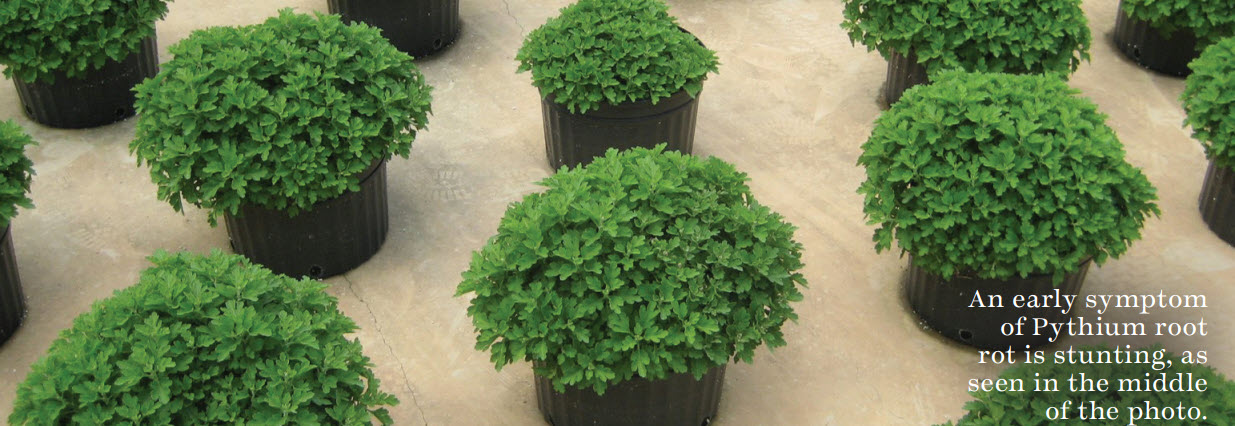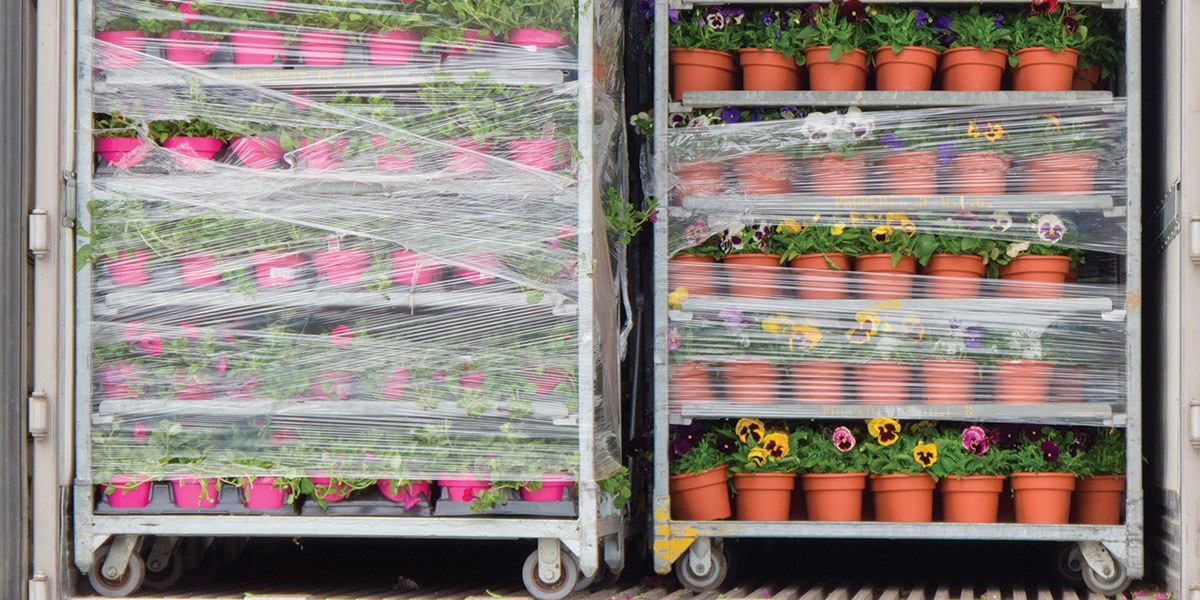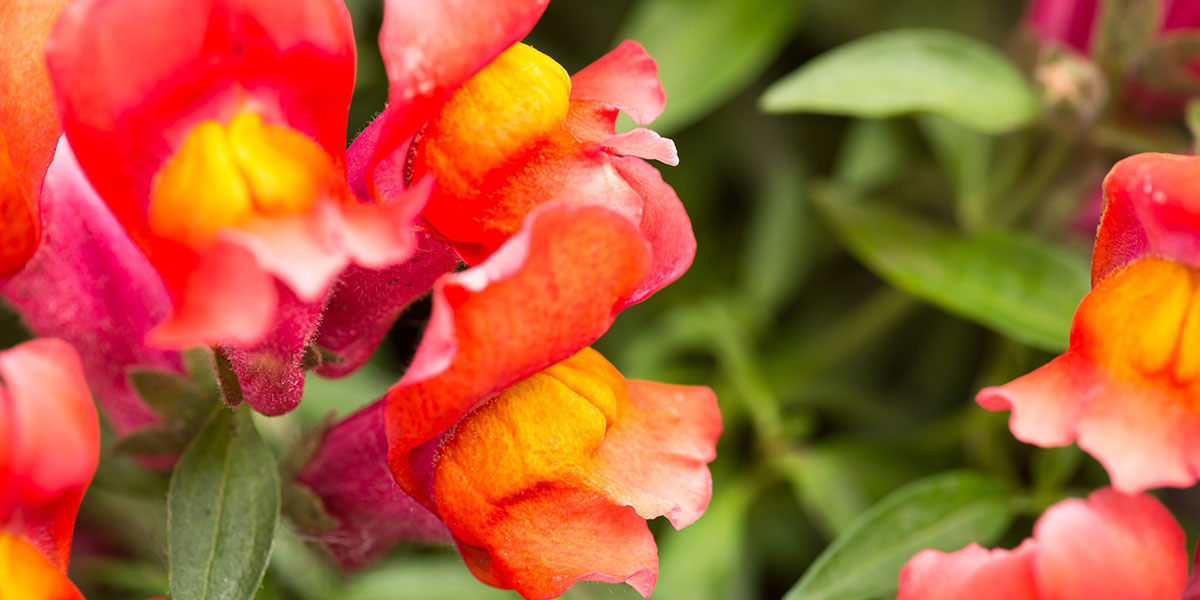Bloom into fall with perfectly protected mums
Tips to keep your plants pest-free all season long


Emma Lookabaugh, PhD
Senior Technical Specialist, Southeast Region

Jen Browning PCA
Senior Technical Specialist, Western Region
Fall comes early when we are talking about mum production and this summer crop is susceptible to its fair share of pests and diseases. Let’s start from the top — at propagation.
Protect mums from fungus gnats and aphids with foundational, weekly applications of Nemasys® beneficial nematodes and Velifer® fungal contact insecticide-miticide. These products work all season long and pinch hit again when thrips turn up to feed on pollen during finish.
Good sanitation practices are key to preventing major losses early in production. Botrytis blight and bacterial soft rot are two diseases that can quickly wipe out cuttings. Start with clean, pathogen-free cuttings obtained from reputable sources. Space plants appropriately to increase air circulation and promote rapid drying. Avoid overhead irrigation when possible to reduce splash spreading of spores. Destroy infected cuttings and sanitize trays, benches and tools between crops.
Scout regularly!
ROTATE TO PROTECT:
Botrytis blight: Orkestra® Intrinsic® brand fungicide (BASF), Decree® (SePRO), Chipco® 26019 (OHP)
Bacterial diseases: CuPRO® (SePRO), Triathlon® BA (OHP)
In between, growers may do battle with mites, caterpillars and even stem borers that find their way into the greenhouse. Rotations of Sultan® miticide, Pylon® miticide insecticide and Mainspring® offer coverage for multiple families of mites with control of caterpillars from the active ingredients in Pylon miticide-insecticide and Mainspring. Don’t forget your growth regulating products like TetraSan®, Azatin® O and Distance® Insect Growth Regulator. Add Millenium® beneficial nematodes for additional control of larval borers. This is especially important since wounds from insect feeding provide easy access for pathogens and consequences can be deadly.
ROTATE TO PROTECT:
Fungus gnats, Western flower thrips: Velifer fungal contact insecticide (BASF), Nemasys beneficial nematodes (BASF)
Aphids, whiteflies: Velifer fungal contact insecticide, Ventigra® insecticide (BASF)
Mites, caterpillars: Sultan miticide (BASF), Pylon miticide-insecticide (BASF), Millenium beneficial nematodes (BASF)
Borers (beetle larvae): Velifer fungal contact insecticide, Millenium beneficial nematodes, Mainspring (Syngenta)
IGRs/MGRs: Azatin O (OHP), Distance IGR (NuFarm), TetraSan (NuFarm)
Remember to keep making applications of Velifer fungal contact insecticide all season long to keep pest pressure down and help chemistry work better.
Two silent killers of garden mums are Fusarium wilt and Pythium root rot. Usually by the time they make themselves known, it’s already too late. Besties for life, these two diseases often come hand-in-hand. Some Fusarium fungi are responsible for root and crown rots while others cause vascular wilts; the latter is usually host-specialized. We’ll focus on Fusarium wilt. The pathogen is most likely to arrive via infected cuttings, but once it’s made its way into the greenhouse, it can persist in crop debris, media and on dirty pots, benches and floors. Early symptoms of disease are easily overlooked and can mimic nutritional issues — like lower leaf yellowing. As disease progresses, symptoms are most obvious when the temperatures in the greenhouse heat up. One-sided wilting and brown vascular discoloration are tell-tale signs of Fusarium wilt and once you see them, it’s time to bust out the trash bags.
Like Fusarium wilt, Pythium root rot usually goes unnoticed until it’s too late. Subtle stunting is the first clue but that can be easily written off. As disease progresses, roots become severely rotted and plants wilt during the heat of the day. While unpopular for obvious reasons, scouting at the hottest time of the day is the best way to root out diseased plants. You’ll easily be able to spot the wilted ones and unless the growing media is dry as a bone, disease is most likely at play. Pull the plant from the pot and check the roots — if they are brown, rotten and maybe a little slimy, you’ll know something is amiss. In severe cases, Pythium can cause stem and foliage blight in mums — aptly named cottony leak. Disease is favored by saturated media conditions so be sure to keep a close eye on any low areas in the greenhouse with poor drainage.
Pythium produces swimming spores that move from pot to pot through irrigation runoff, so ebb-and-flow or flood irrigation systems may increase pathogen spread. Pythium can also become a permanent resident in irrigation reservoirs i.e. ponds, so be sure to check your water treatment systems regularly to ensure you aren’t pumping pathogen propagules back onto healthy plants.
The old “chicken or the egg” adage rings true for both of these diseases. In the end, it won’t matter which came first, only that we failed to control them both. Remember that Pythium are “special” and most fungicides have no activity against this group of pathogens. The best control is achieved by using oomycete-specific chemistry. Set yourself up for success and start strong with preventive fungicide applications. Do your roots a favor and drench with Empress® Intrinsic brand fungicide. Intrinsic brand fungicides provide excellent disease control and proven plant health benefits including faster rooting, improved stress tolerance and increased growth efficiency — for results that make the difference. Tank mix with other modes of action for enhanced, broad-spectrum control of root and crown diseases.
ROTATE TO PROTECT:
Fusarium wilt: Orkestra Intrinsic brand fungicide (BASF), Empress Intrinsic brand fungicide tank mixed with Avelyo™ fungicide (BASF), Medallion® (Syngenta)
Pythium root rot: Empress Intrinsic brand fungicide (BASF) tank mixed with Segway O® (OHP), Terrazole® (OHP), Subdue Maxx® * (Syngenta)
*Resistance to mefenoxam has been reported, tank mix or rotate with another mode of action
Always read and follow label directions. Avelyo is a trademark of BASF. Empress, Intrinsic, Millenium, Nemasys, Orktestra, Pylon, Sultan, Velifer and Ventigra are registered trademarks of BASF.






